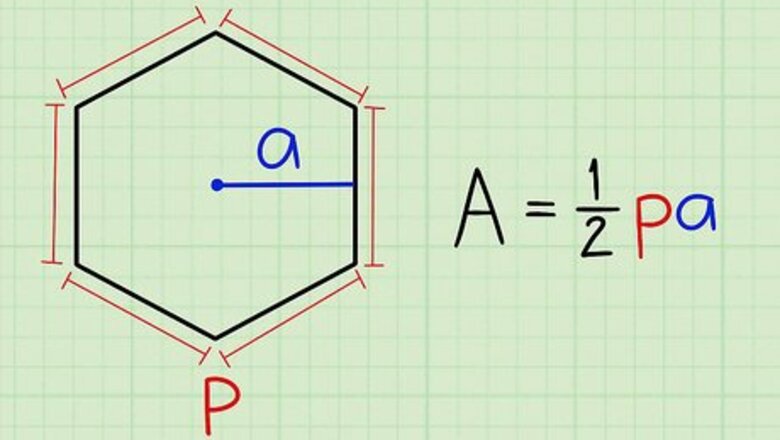
views
Finding the Area with Apothems
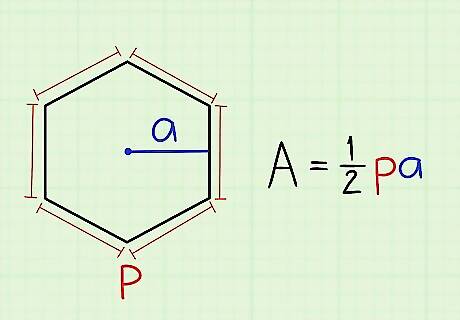
Write down the formula for finding the area of a regular polygon. To find the area of a regular polygon, all you have to do is follow this simple formula: area = 1/2 x perimeter x apothem. Here is what it means: Perimeter = the sum of the lengths of all the sides Apothem = a segment that joins the polygon's center to the midpoint of any side that is perpendicular to that side
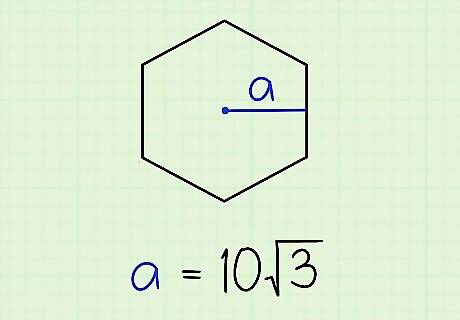
Find the apothem of the polygon. If you're using the apothem method, then the apothem will be provided for you. Let's say you're working with a hexagon that has an apothem with a length of 10√3.
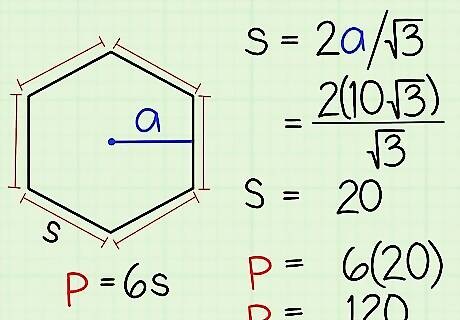
Find the perimeter of the polygon. If the perimeter is provided for you, then you're nearly done, but it's likely that you have a bit more work to do. If the apothem is provided for you and you know that you're working with a regular polygon, then you can use it to find the perimeter. Here's how you do it: Think of the apothem as being the "x√3" side of a 30-60-90 triangle. You can think of it this way because the hexagon is made up of six equilateral triangles. The apothem cuts one of them in half, creating a triangle with 30-60-90 degree angles. You know that the side across from the 60 degree angle has length = x√3, the side across from the 30 degree angle has length = x, and the side across from the 90 degree angle has length = 2x. If 10√3 represents "x√3," then you can see that x = 10. You know that x = half the length of the bottom side of the triangle. Double it to get the full length. The bottom side of the triangle is 20 units long. There are six of these sides to the hexagon, so multiply 20 x 6 to get 120, the perimeter of the hexagon.
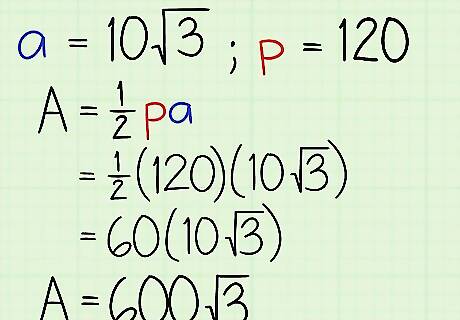
Plug the apothem and the perimeter into the formula. If you're using the formula area = 1/2 x perimeter x apothem, then you can plug in 120 for the perimeter and 10√3 for the apothem. Here is what it will look like: area = 1/2 x 120 x 10√3 area = 60 x 10√3 area = 600√3

Simplify your answer. You may need to state your answer in decimal instead of square root form. Just use your calculator to find the closest value for √3 and multiply it by 600. √3 x 600 = 1,039.2. This is your final answer.
Finding the Area of Regular Polygons Using Other Formulas

Find the area of a regular triangle. If you want to find the area of a regular triangle, all you have to do is follow this formula: area = 1/2 x base x height. If you have a triangle with a base of 10 and a height of 8, then the area = 1/2 x 8 x 10, or 40.

Find the area of a square. To find the area of a square, just square the length of one side. This is really the same thing as multiplying the base of the square by its height, because the base and height are the same. If the square has a side length of 6, then the area is 6 x 6, or 36.
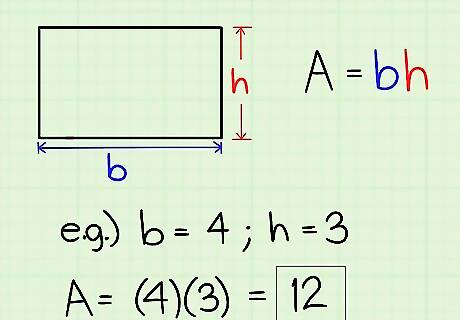
Find the area of a rectangle. To find the area of a rectangle, simply multiply the base times the height. If the base of the rectangle is 4 and the height is 3, then the area of the rectangle is 4 x 3, or 12.
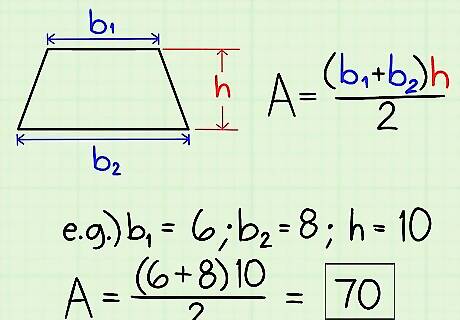
Find the area of a trapezoid. The find the area of a trapezoid, you just have to follow this formula: area = [(base 1 + base 2) x height]/2. Let's say you have a trapezoid with bases that have a length of 6 and 8 and a height of 10. The area is simple [(6 + 8) x 10]/2, which can be simplified to (14 x 10)/2, or 140/2, which makes for an area of 70.
Finding the Area of Irregular Polygons
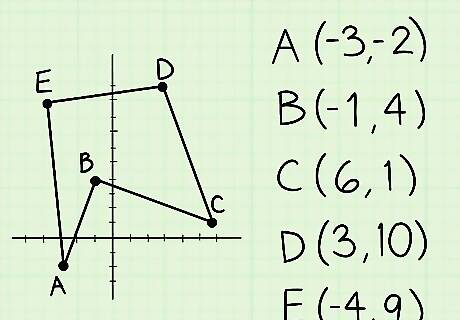
Write down the coordinates of the vertices of the irregular polygon. Determining the area for an irregular polygon can be found when you know the coordinates of the vertices.
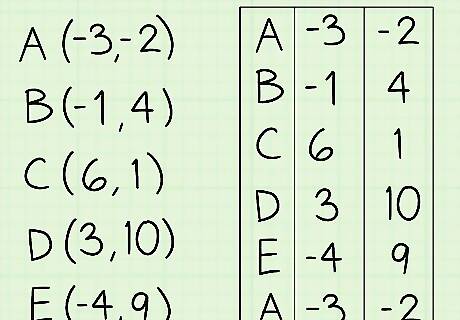
Create an array. List the x and y coordinates of each vertex of the polygon in counterclockwise order. Repeat the coordinates of the first point at the bottom of the list.
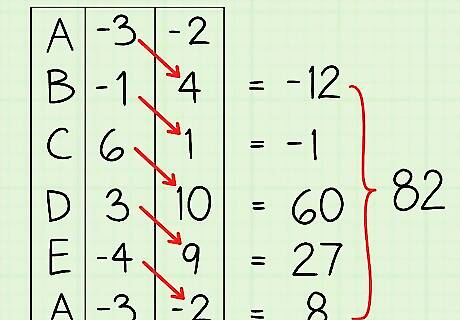
Multiply the x coordinate of each vertex by the y coordinate of the next vertex. Add the results. The added sum of these products is 82.
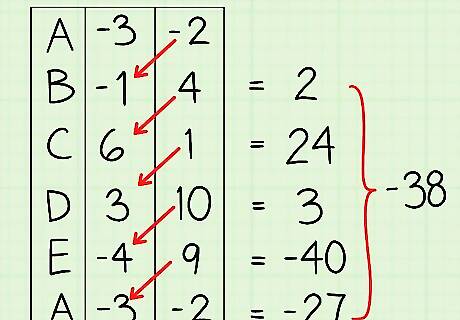
Multiply the y coordinate of each vertex by the x coordinate of the next vertex. Again, add these results. The added total of these products is -38.
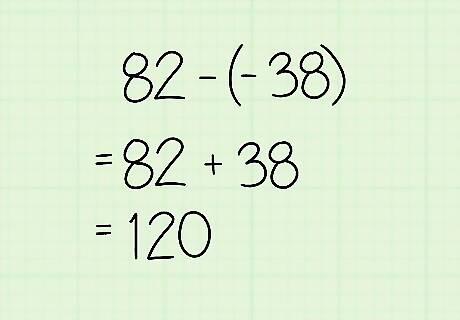
Subtract the sum of the second products from the sum of the first products. Subtract -38 from 82 to get 82 - (-38) = 120.
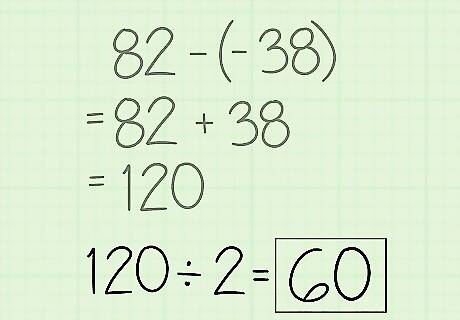
Divide this difference by 2 to get the area of the polygon. Just divide 120 by 2 to get 60 and you're all done.

















Comments
0 comment